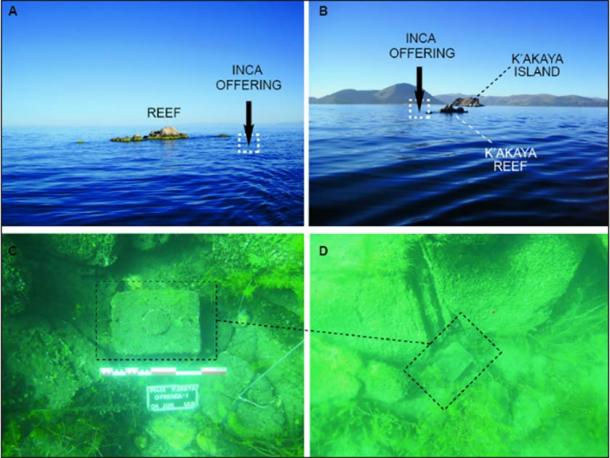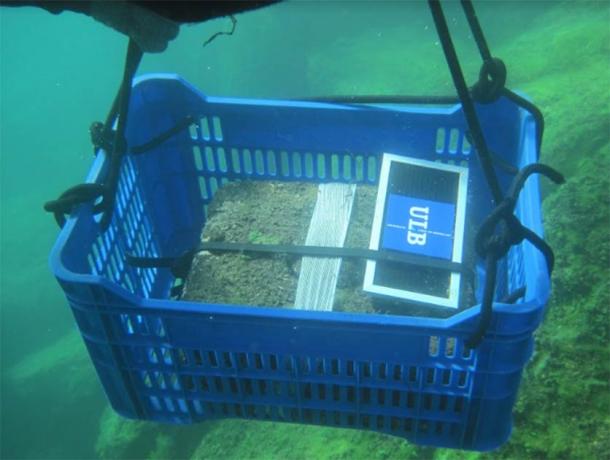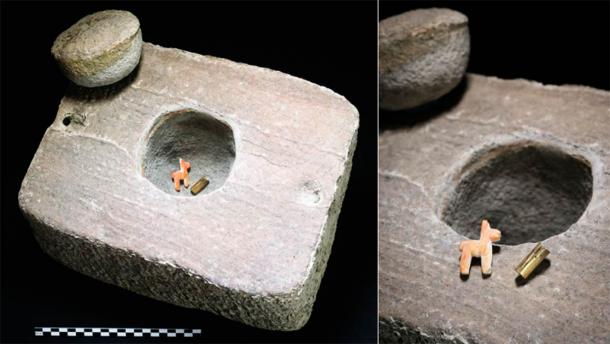Underwater archaeologists in Peru have discovered an ancient stone box containing treasures pertaining to an “alternative” sacrificial ritual, they reveal in a study published in Antiquity.
The Inca Empire dominated the Andes mountains of southwest South America during the 15th and 16th centuries until the arrival of Spanish conquistadors , and Lake Titicaca was the mythological place of Inca origin where the god Viracocha resided. And the Lake’s Island of the Sun was the No 1 pilgrimage spot in the Inca empire where Viracocha’s son, the Sun god Inti emerged to bring the world from darkness.
Lake Titicaca is a large, deep, freshwater lake in the Andes on the border of Bolivia and Peru, often called the “highest navigable lake” in the world and underwater excavations at Puncu on the southern shore of the Island of the Sun indicate the lake level during the Inca period (after AD 1440) was the same as in 2014.
On the K ’akaya reef close to the north-eastern shore of the lake, archaeologists have discovered a stone box containing miniature votive figurines of gold, silver and shell that were submerged in the great lake as “ritual offerings.”

View of the K’akaya reef and position of the offering (A) and location with respect to K’akaya Island (B); the offering in situ (C–D) ( C. Deaere / Antiquity Publications Ltd )
Recovery of the Submerged Inca Treasure Chest
The team of researchers was led by Dr. Christophe from the Oxford Centre for Maritime Archaeology , University of Oxford, UK and the Centre de Recherches en Archéologie et Patrimoine , Université libre de Bruxelles, Belgium, and he said in a new paper published in the Journal Antiquity that the “location, content and broader socio-cultural context of Inca sacrifices illuminate the religious and social meaning of underwater ritual offerings at Lake Titicaca.”
The southernmost outcrop of the K ’akaya reef lies entirely beneath the surface of the lake and the underwater survey discovered the stone box isolated in lake sediment to the south-west of the reef at a depth of 5.50–5.80m below lake level, and the only other artifacts found were remains of modern recent gill nets and stone anchors. Once the ancient box had been identified, a full photogrammetric record of it in situ was performed before it was placed in a large plastic container and transported to the surface.

The artifacts being hauled up in a plastic container (C. Delaere / Antiquity Publications Ltd )
Peeling Back The Lid…
The ancient treasure chest was taken to a field laboratory where the scientists slowly opened it in the presence of various municipal and local Indigenous community authorities, revealing “a cylindrical gold foil resting against a small camelid figurine made of Spondylus shell.“ Comparable miniature gold bracelets have been found in the Cuzco Valley and this discovery will join 28 other cylindrical, cube-shaped and composite stone boxes that have been discovered in Khoa by various diving expeditions. However, unlike the Khoa cube-shaped boxes that have been discovered, the paper explains that they tend to be tall with quadrangular caps, where the K ’akaya box is rectangular, with a circular plug.

The offering inside its box: a miniature gold bracelet and miniature llama or alpaca (T. Seguin, Université libre de Bruxelles / Antiquity Publications Ltd )
The researchers explained that Inca worship in Khoa connects directly to the pilgrimage ceremonies associated with the Inca birthplace at the Island of the Sun, which Adolph Bandelier, the 19th century Swiss-born American archaeologist said, is where Huayna Capac, the last of the Inca head chiefs, previous to Atahualpa and Huascar , “performed fearful human sacrifices.”
The Children Got Off Lightly, This Time
“Qhapaq hucha” was the Inca practice of human sacrifice and this mainly involved children during or after important celestial or catastrophic Earthly events, such as the death of the Sapa Inca (emperor) or during a flood or famine. Considered as the purest of beings, children were selected as sacrificial victims and sometimes walked several thousands of miles to their death chambers on the tops of Argentinian mountains and volcanoes.
The offerings discovered in the stone box are considered to be “sacrificial replacements,” perhaps offered to the gods residing in Lake Titicaca as sacrifices in times of poor weather.” In conclusion, the Inca stone box recently discovered on the K ’akaya reef greatly adds to the understanding of how votive offerings played a role in the expanding Inca empire and also strengthens the popular hypothesis that the entire lake was revered as a sacred “huaca” (sacred site) and maybe even as a deity itself.
Top image: The figurine and foil from the Inca treasure chest. Source: Teddy Senguin, Université libre de Bruxelles / Antiquity Publications Ltd
By Ashley Cowie
Related posts:
Views: 0
 RSS Feed
RSS Feed
















 August 3rd, 2020
August 3rd, 2020  Awake Goy
Awake Goy  Posted in
Posted in  Tags:
Tags: 
















